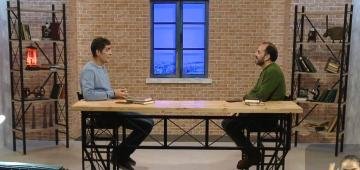 |
Ruben Hakhverdyan: song and poetryWhat artistic and poetic features do the lyrics of Ruben Hakhverdyan's songs have, what thematic directions do they have, can we consider those lyrics poems and why? Literary critics Hayk Hambardzumyan and Arkmenik Nikoghosyan discuss the topic on the "Parallel Readings" program. |
 |
The reopening of the National Center of Aesthetics Museum
Reopening of the Museum of the National Center of Aesthetics
In September, the Children's Art Museum of the National Center of Aesthetics named after Henrik Igityan officially reopened in its original, historical space. After renovation, functional reinterpretation and re-equipment, the National Center of Aesthetics today presents itself with a new spirit and opportunities. From now on, in the center, you can not only get acquainted with the works of art created by children, but also create independently. The center has an ambitious mission to create an innovative, inclusive and multifunctional cultural and educational space, where people of different ages, professions and interests can express themselves and develop through the transformative power of art. Anahit Margaryan spoke with the director of the center, artistic director of the Small Theater, director Vahan Badalyan.
|
 |
Nothing is new under the sun: part 4
In 1937, Bishop Artak Smbatyants was arrested in the Yerevan prelacy. The investigative bodies tried in every way to extract charges against the Catholicos from him. The investigators were interested in the ties of Catholicos Muradbekyan with foreign countries. It was necessary to label the head of the church as a state traitor and agent. The main targets were the Primate of the Atrpatakan Diocese, Archbishop Nerses Melik-Tangyan, and the famous intellectual Arshak Chopanyan. The Catholicos' ties with Chopanyan, who lived in Paris, were described as "irrefutable evidence of espionage." In 1937, Bishop Smbatyants was shot. In 1955, he was acquitted due to the lack of evidence of the crime.
Source: RA Ministry of Internal Affairs, National Archives and National Archives
|
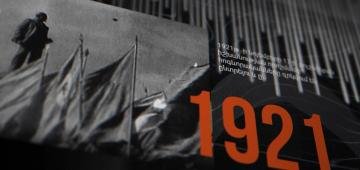 |
Nothing is new under the sun: part 3
By the decision of the Bolshevik government on November 17, 1921, the clergy were deprived of the right to vote and be elected, and the teaching of religious subjects in schools was prohibited. Article 6 of the constitution adopted on February 2, 1922, the church ceased to be a legal entity and had no right to acquire any property. This was followed by the seizure of movable and immovable property belonging to the church and their declaration as state property. In 1930, the monasteries of Sanahin and Sevan were dissolved. In 1933, the Geghard monastery was closed, and Ayrivan was also declared a closed archaeological site. As a result of persecution and repression, in 1938, only 7 clergy remained in the Mother See. Only the Mother Cathedral of St. Etchmiadzin was operational.
Source: RA Ministry of Internal Affairs, National Archives and National Archives
|
 |
Red Ball
The music for the song “Red Ball” is by Vahe Hayrapetyan, accompanied by pianist Liana Torosyan.
The children, along with singer and songwriter Hasmik Baghdasaryan-Dolukhanyan, perform songs by contemporary Armenian composers, folk songs, and songs by Komitas. Hasmik Baghdasaryan-Dolukhanyan aims to popularize children’s songs by contemporary composers through children’s performances.
|
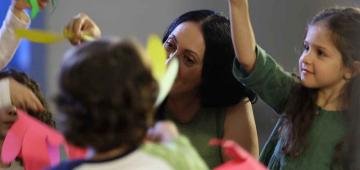 |
Day and Me
The music for the song “Day and Me” is by Argina Harutyunyan, accompanied by pianist Liana Torosyan. Puppeteer Aghasi Melkonyan, staging a small performance with the participation of children, makes the song more vivid and interesting.
The children, together with singer and songwriter Hasmik Baghdasaryan-Dolukhanyan, perform songs by contemporary Armenian composers, folk songs, and songs by Komitas. Hasmik Baghdasaryan-Dolukhanyan aims to popularize children’s songs by contemporary composers through children’s performances.
|
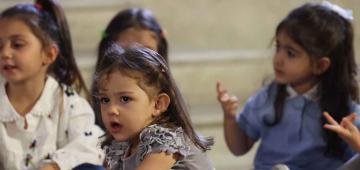 |
Five Ducks
Raffi Kavukian "Five Ducks", accompanied by pianist Liana Torosyan.
The children, along with singer and songwriter Hasmik Baghdasaryan-Dolukhanyan, perform songs by contemporary Armenian composers, folk songs, and songs by Komitas. Hasmik Baghdasaryan-Dolukhanyan aims to popularize children's songs by contemporary composers through children's performances.
|
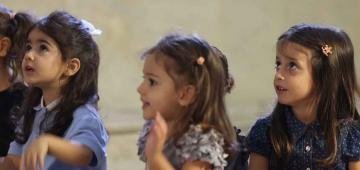 |
Zmpik zmpik
Folk song "Zmpik zmpik", accompanied by pianist Liana Torosyan.
The children, along with singer and songwriter Hasmik Baghdasaryan-Dolukhanyan, perform songs by contemporary Armenian composers, folk songs, and songs by Komitas. Hasmik Baghdasaryan-Dolukhanyan aims to popularize children's songs by contemporary composers through children's performances.
|
 |
Light Has OpenedThe music for the song "Light Has Opened" is by Argina Harutyunyan, accompanied by pianist Liana Torosyan. The children, together with singer and songwriter Hasmik Baghdasaryan-Dolukhanyan, perform songs by contemporary Armenian composers, folk songs, and songs by Komitas. Hasmik Baghdasaryan-Dolukhanyan aims to popularize children's songs by contemporary composers through children's performances. Puppet master Aghasi Melkonyan, by staging a small performance with the participation of children, makes the song more vivid and interesting. |
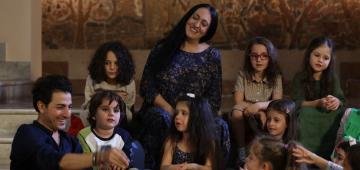 |
"Kele, kele"Komitas "Kele, kele", accompanied by pianist Liana Torosyan. The children, together with singer and songwriter Hasmik Baghdasaryan-Dolukhanyan, perform songs by contemporary Armenian composers, folk songs, and songs by Komitas. Hasmik Baghdasaryan-Dolukhanyan aims to popularize children's songs by contemporary composers through children's performances. Puppet master Aghasi Melkonyan, by staging a small performance with the participation of children, makes the song more vivid and interesting. |
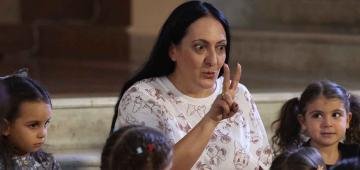 |
Two Cats
The music for the song "Two Cats" is by Robert Petrosyan, accompanied by pianist Liana Torosyan.
The children, together with singer and songwriter Hasmik Baghdasaryan-Dolukhanyan, perform songs by contemporary Armenian composers, folk songs, and songs by Komitas. Hasmik Baghdasaryan-Dolukhanyan aims to popularize children's songs by contemporary composers through children's performances. Puppet master Aghasi Melkonyan, by staging a small performance with the participation of children, makes the song more vivid and interesting.
|
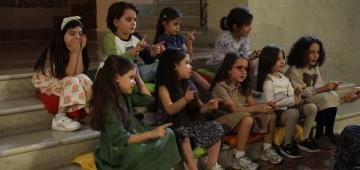 |
The Clock
The music for the song “Clock” is by Geghuni Chtchyan, accompanied by pianist Liana Torosyan.
The children, along with singer and songwriter Hasmik Baghdasaryan-Dolukhanyan, perform songs by contemporary Armenian composers, folk songs, and songs by Komitas. Hasmik Baghdasaryan-Dolukhanyan aims to popularize children’s songs by contemporary composers through children’s performances.
|
